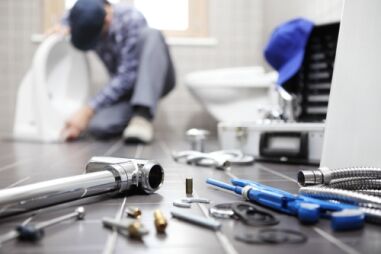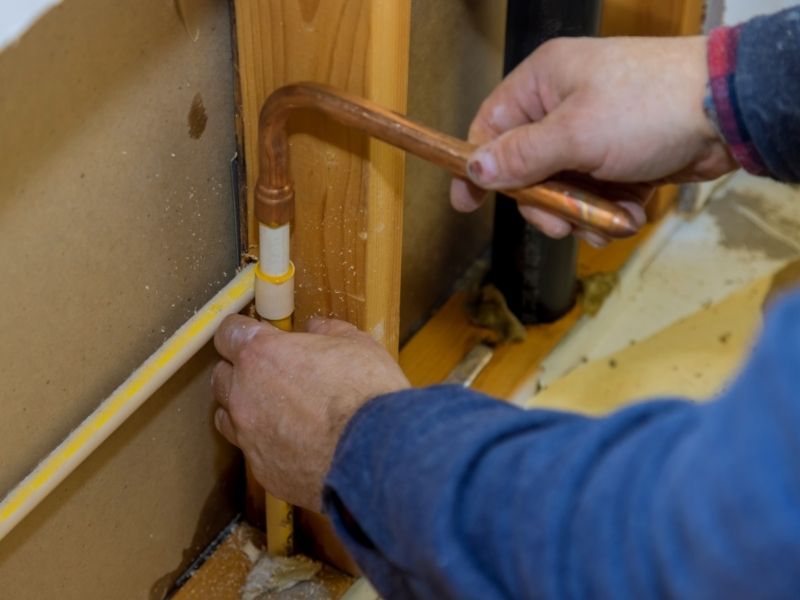Solving Plumbing Issues in Rental Properties: A Step-by-Step Guide
Solving Plumbing Issues in Rental Properties: A Step-by-Step Guide
Blog Article
We have noticed this post on 10 Common Rental Property Repairs directly below on the net and decided it made perfect sense to share it with you in this article.

Handling pipes issues in rental residential properties efficiently is vital for maintaining tenant fulfillment and maintaining the home's worth. Whether you're a landlord or a residential property supervisor, knowing exactly how to resolve these common issues can conserve you money and time while ensuring compliance with lawful duties. Here's a step-by-step guide on exactly how to handle plumbing problems in rental buildings.
Document Whatever
Keep in-depth documents of all reported pipes issues and the actions taken to fix them. Paperwork must consist of days, summaries of the trouble, communication with tenants, and receipts from professionals or plumbing professionals. This details can be crucial for insurance claims, tax deductions, and legal protection.
Use Qualified Professionals
Always use licensed and insured professionals for significant plumbing repairs and installations. This ensures that the work depends on code and can aid stay clear of responsibility issues in case of crashes or more damages. It additionally guarantees occupants that repair services are being managed skillfully.
Establish Clear Communication
Encourage lessees to report any kind of pipes problems as soon as they occur. Give numerous communication channels such as phone, e-mail, or a renter portal to make it very easy for them to reach out. Motivate actions to these reports can avoid minor issues from rising right into major troubles.
Enlighten Occupants
Educate your tenants concerning what makes up a plumbing emergency situation and what does not. Supply guidelines on just how to take care of minor issues themselves, such as using a bettor to unclog a commode. Likewise, inform them concerning what they must avoid taking down drains to stop blockages, such as grease, coffee premises, and non-biodegradable products.
Normal Maintenance
Implement a regular maintenance timetable for all plumbing systems in your service residential properties. Routine checks can aid determine and resolve concerns like leaks, slow-moving drains, or rusty pipes prior to they become severe. Consider employing a professional plumbing technician to examine the buildings yearly or semi-annually.
Quick Feedback to Emergencies
Have a strategy in place for reacting to plumbing emergencies. This need to include having the get in touch with details of reputable pipes services that provide 24/7 emergency situation repairs. Quick action is vital to reduce damages in scenarios like burst pipes or serious leakages.
Preventive Upgrades
Consider upgrading older pipes systems and components to much more modern-day, reliable models. This can decrease the regularity and extent of plumbing issues and lower lasting upkeep costs. It's also a selling factor for possible lessees who value upgrades and modern functions.
Occupant Move-Out Inspections
Conduct detailed plumbing checks during move-out evaluations to make certain that any kind of issues are identified and dealt with before a new occupant relocate. This stops disagreements with brand-new lessees over pre-existing problems and ensures the residential or commercial property is in top condition.
Understand Legal Responsibilities
Know your legal responsibilities concerning plumbing and general residential property upkeep. A lot of territories need property owners to ensure their homes are habitable and that all plumbing systems are in good working order. Failing to resolve significant concerns immediately can cause legal actions from renters.
Tenant Reimbursements
If a pipes concern needs instant interest and the renter deals with the issue by themselves, have a clear plan in place for reimbursing prices. Make sure renters know they should get prior approval for higher-cost fixings unless it's an outright emergency.
Conclusion
Taking care of plumbing issues in rental buildings calls for a positive approach and great interaction with lessees. By remaining on top of upkeep, reacting quickly to emergency situations, and utilizing qualified specialists, property owners can keep their buildings in exceptional problem and maintain great connections with renters.
How to Handle Water Damage in a Rental Property
What is Water Damage?
Water damage is harm or destruction caused by water entering areas where it is not supposed to be. It can be caused by a variety of sources and can manifest in different ways. The most common examples of water damage include:
Leaking roof Plumbing leaks Appliance malfunctions Poor drainage Flooding Sewage backup Condensation Tenant negligence HVAC system issues Frozen pipes Is water damage dangerous?
Water damage itself is not inherently dangerous, but it can lead to various hazards and health risks if not promptly and properly addressed. The severity of these risks depends on the extent of the water damage, the source of the water, and how quickly it is mitigated.
Some potential dangers associated with water damage include structural damage, mold and bacterial growth, electrical hazards, water contamination, and pest infestations. In situations where mold and mildew have gone unaddressed, mold can start to develop within 24-48 hours of water exposure, and this can impose a serious health risk to tenants. In particular, mold spores and damp conditions can lead to respiratory issues and even make existing health problems worse, such as allergies, asthma, or immune disorders.
Water Damage in an Apartment - Who is Responsible?
If the water damage is caused by the tenant’s negligence, the tenant is responsible for the cost of repairs. If the water damage is caused by a defect in the property, the landlord is responsible for the cost of repairs. If the water damage is a result of natural causes, such as excessive rain, then the landlord is responsible, since the water intrusion likely occurred due to a defect in the property. Landlord Responsibility water damage in rental property
Since maintaining habitability is the landlord’s legal responsibility, landlords are responsible for any resulting structural damage caused by water damage. These structural damages may include damage to walls, roofs, ceilings, and flooring. If water damage has affected the rental property’s original structure, the landlord is responsible for repairing or replacing those materials. Therefore, landlords should have property insurance that covers the structural components of their rental property so that they can receive help with the costs of covered events.
Preventative measures can also help landlords avoid massive renovations. Preventative maintenance may include conducting regular inspections to identify and address potential water damage before it becomes a major and urgent problem.
If a landlord fails to meet their responsibilities regarding water damage, it can lead to legal disputes and potential liability. Tenants who believe their landlord is not addressing water damage issues in accordance with California law can seek legal advice or contact local housing authorities for assistance.
https://www.goodlifemgmt.com/blog/water-damage-in-a-rental-property/

I hope you enjoyed reading our part about 10 Common Rental Property Repairs. Thanks so much for taking time to browse our short article. Sharing is nice. Who knows, you may just be doing someone a favor. Thanks a lot for your time invested reading it.
Report this page